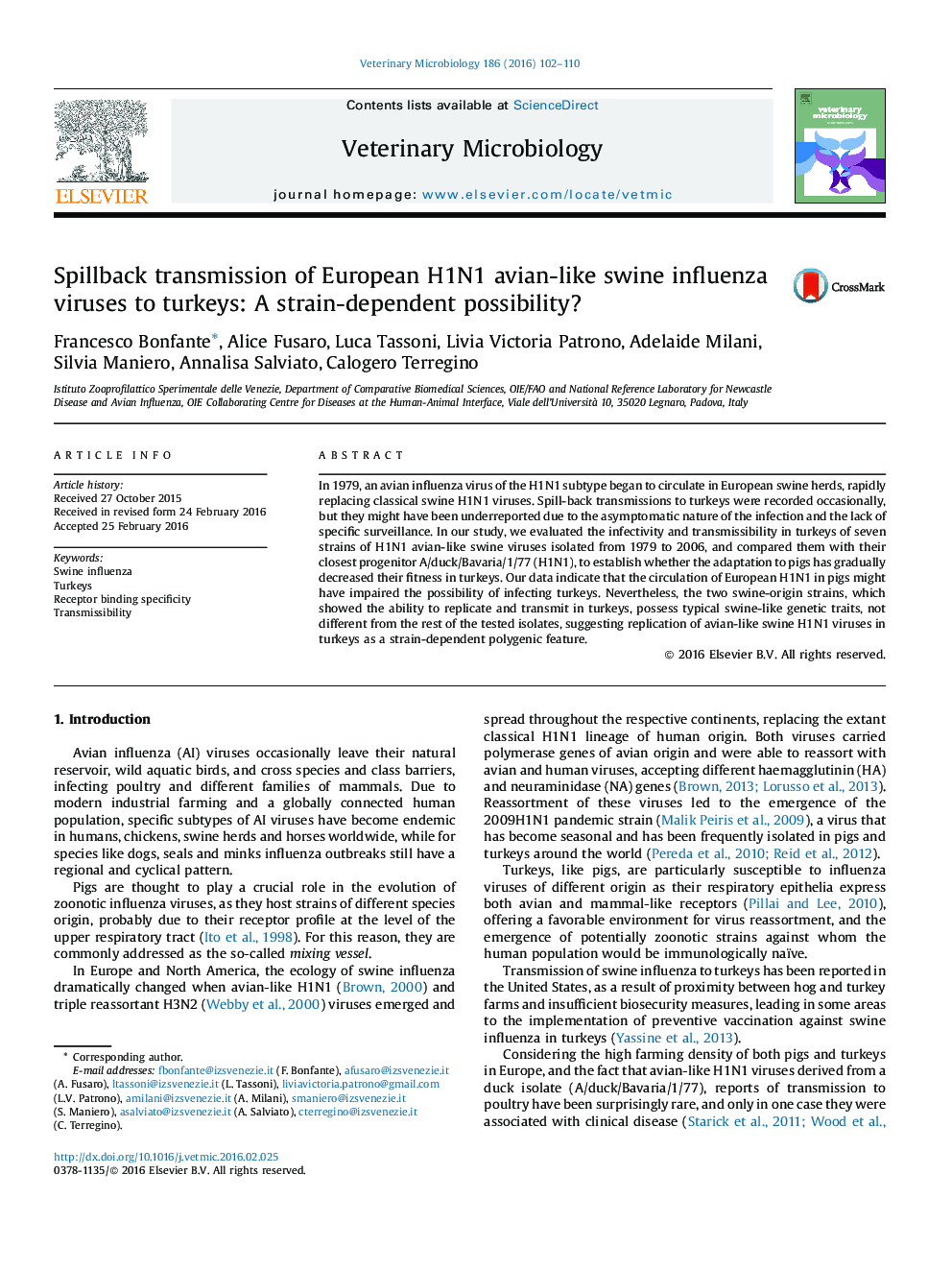| Article ID | Journal | Published Year | Pages | File Type |
|---|---|---|---|---|
| 5799704 | Veterinary Microbiology | 2016 | 9 Pages |
â¢Replication of avian-like swine H1N1 viruses in turkeys is a strain-dependent feature.â¢Avian-like swine H1N1 viruses replicating and transmitting in turkeys possess human-like receptor binding specificity.â¢Isolates displaying opposite agglutinating capabilities share the same key amino acids at the level of the hemagglutinin, suggesting other determinants are involved.
In 1979, an avian influenza virus of the H1N1 subtype began to circulate in European swine herds, rapidly replacing classical swine H1N1 viruses. Spill-back transmissions to turkeys were recorded occasionally, but they might have been underreported due to the asymptomatic nature of the infection and the lack of specific surveillance. In our study, we evaluated the infectivity and transmissibility in turkeys of seven strains of H1N1 avian-like swine viruses isolated from 1979 to 2006, and compared them with their closest progenitor A/duck/Bavaria/1/77 (H1N1), to establish whether the adaptation to pigs has gradually decreased their fitness in turkeys. Our data indicate that the circulation of European H1N1 in pigs might have impaired the possibility of infecting turkeys. Nevertheless, the two swine-origin strains, which showed the ability to replicate and transmit in turkeys, possess typical swine-like genetic traits, not different from the rest of the tested isolates, suggesting replication of avian-like swine H1N1 viruses in turkeys as a strain-dependent polygenic feature.
